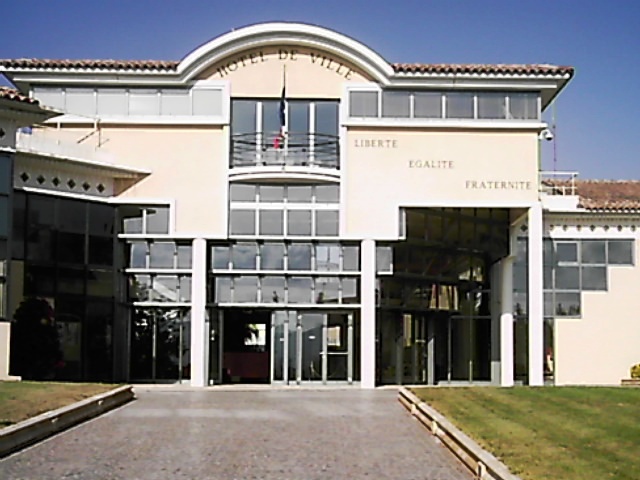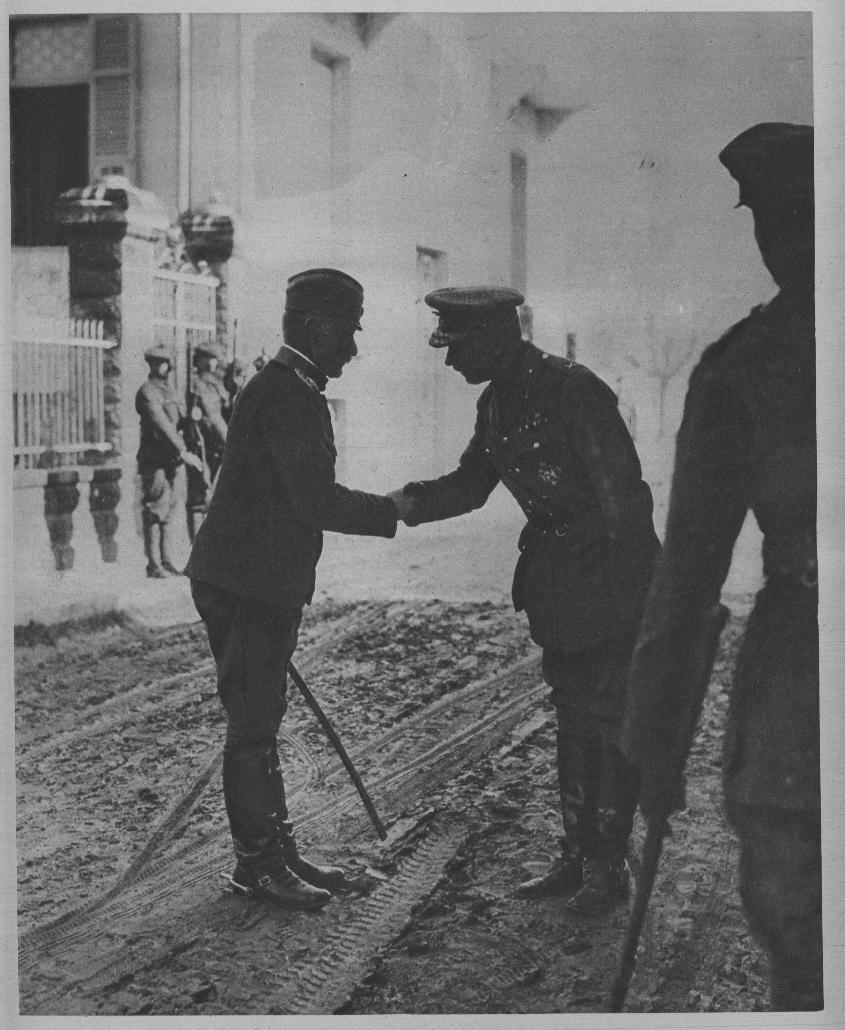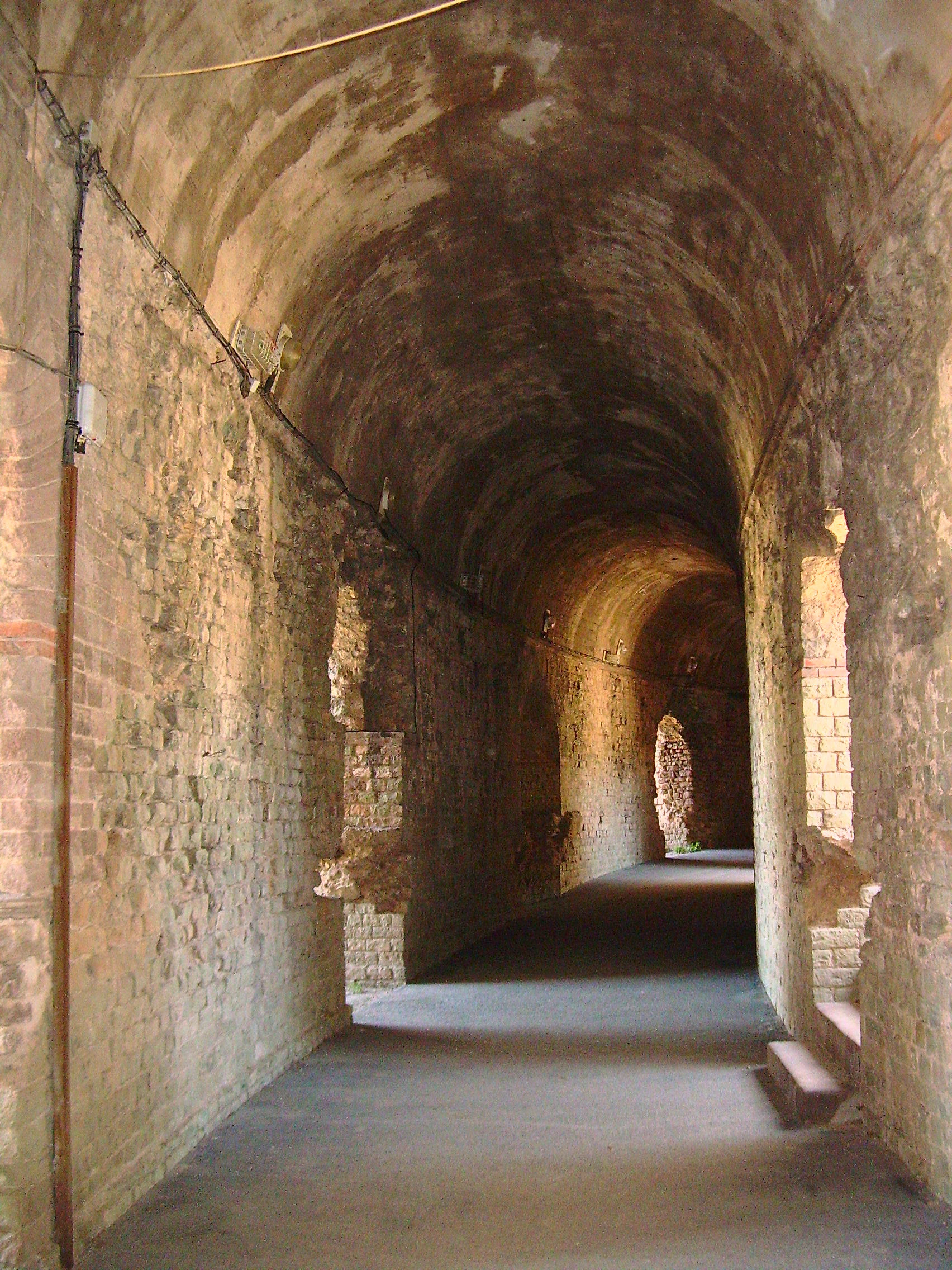|
Tirailleurs Malgaches
The tirailleurs malgaches were a corps of French colonial infantry established in Madagascar. Overview After the annexation of Madagascar by France in 1896, Malagasy troops were recruited, and the ''Tirailleurs malgaches'' were formed along similar lines to the Senegalese Tirailleurs, forming part of the Troupes coloniales of the French Armed Forces. In 1905, there were three regiments, each of three battalions apiece, stationed at Tananarive, Tamatave and Diego Suarez. World War I During World War I, the governor general of the colony, Hubert Garbit, organised the mobilisation of the Malagasy population. The first contingent was sent in October 1915 to France, followed by five others in 1916. Like their Tirailleurs indochinois counterparts the ''Tirailleurs malgaches'' battalions were initially employed behind the lines in guard, depot and factory-worker duties, rather than being deployed in a fighting role. A total of 26 battalions were formed between 1916 and 1918. These ... [...More Info...] [...Related Items...] OR: [Wikipedia] [Google] [Baidu] |
Troupes Coloniales
The ''Troupes coloniales'' ("Colonial Troops") or ''Armée coloniale'' ("Colonial Army"), commonly called ''La Coloniale'', were the military forces of the French colonial empire from 1900 until 1961. From 1822 to 1900 these troops were designated ''Troupes de marine'' ("Marine Troops" or just "Marines"), and in 1961 they readopted this name. They were recruited from mainland France or from the French settler and indigenous populations of the empire. This force played a substantial role in the conquest of the empire, in World War I, World War II, the First Indochina War and the Algerian War. Makeup of French Colonial Forces The ''Armée coloniale'' should not be confused with the famous North African regiments of the French Army such as the Foreign Legion, the Battalions of Light Infantry of Africa, Zouaves, Spahis, Algerian and Moroccan Tirailleurs (sharpshooters) and Goumiers, all of which were part of the Army of Africa. The North African units date from 1830 and were ... [...More Info...] [...Related Items...] OR: [Wikipedia] [Google] [Baidu] |
Puget-sur-Argens
Puget-sur-Argens (, literally ''Puget on Argens''; oc, Lo Puget d'Argenç) is a commune in the Var department in the Provence-Alpes-Côte d'Azur region in southeastern France. It is located at 687 kilometres south-east of Paris. It is called ''Lo Pugeton'' or ''Lo Puget d'Argènç'' in Occitan and ''Le Petit Puget'' in the province to distinguish it from the city formerly more important from Puget-Ville. and is located at the crossing of the Route nationale 7 and the A8 autoroute. The population of Puget-on-Argens has multiplied by four since 1950 and many companies have come to the town. In fact, the strong demographic and economic expansion in direct periphery tends to transform the commune into a suburban residential and working area. Its inhabitants are called ''Pugétois''. Demographics Climate See also *Communes of the Var department The following is a list of the 153 communes of the Var department of France. The communes cooperate in the following inter ... [...More Info...] [...Related Items...] OR: [Wikipedia] [Google] [Baidu] |
Positions Dans Le Secteur De Guieurdina (13-18 Juin 1916) - Gieurdina (environs) - Médiathèque De L'architecture Et Du Patrimoine - APOR050384
Position often refers to: * Position (geometry), the spatial location (rather than orientation) of an entity * Position, a job or occupation Position may also refer to: Games and recreation * Position (poker), location relative to the dealer * Position (team sports), a player role within a team Human body * Human position, the spatial relation of the human body to itself and the environment ** Position (obstetrics), the orientation of a baby prior to birth ** Positions of the feet in ballet ** Position (music), the location of the hand on a musical instrument ** Proprioception, the sense of the relative position of neighbouring parts of the body ** Asana (yoga), the location and posture of the body while practicing yoga ** Sex position, the arrangement of bodies during sexual intercourse Humanities, law, economics and politics * Philosophical theory, a belief or set of beliefs about questions in philosophy * Position (finance), commitments in a financial marketplace * Soc ... [...More Info...] [...Related Items...] OR: [Wikipedia] [Google] [Baidu] |
Troupes De Marine
The (TDM, ) is a corps of the French Army that includes several specialities: infantry, artillery, armoured, airborne, engineering, and transmissions (Signals). Despite its name, it forms part of the Army, not the Navy. Intended for amphibious and overseas operations, the Troupes de marine have been, and still are, in all the fights of the French army. It has gradually become professionalized since 1970. History The were formerly known as the , with origins dating back to the (in reference to Troupes of La Marine). The French colonies were under the control of the (the equivalent of the British Admiralty), accordingly, marines defended the colonies. Ancien Régime Origin Renamed then during the dismantling of the French Union (1958), their origin can actually be found in the (french: Compagnies Ordinaires de la Mer) (''Ordinary Sea Companies''), created in 1622 by Cardinal Richelieu. These companies were used to embark on royal naval ships to serve the nava ... [...More Info...] [...Related Items...] OR: [Wikipedia] [Google] [Baidu] |
Moroccan Division (France)
) 1914 – First Battle of the Marne (''Bataille des Marais de Saint-Gond'')(french: Bataille des Marais de Saint-Gond) 1915 – Bataille de l'Artois 1915 – 2e Bataille de Champagne 1916 – Bataille de la Somme 1917 – Bataille des monts de Champagne 1917 – Bataille de Verdun 1918 – Bataille de l'Aisne 1918 – Offensive des Cent-Jours ( Bataille de Vauxaillon)(french: Bataille de Vauxaillon) , notable_commanders= , anniversaries= , identification_symbol= ''Division de Marche du Maroc'' (D.M du Maroc) , identification_symbol_label= Marching Division of Morocco , identification_symbol_2= ''Division Marocaine'' ''1re Division Marocaine ''(D.M, 1re D.M)'' , identification_symbol_2_label= 1st Moroccan Division The Moroccan Division (french: Division marocaine, 1re D.M) or the 1st Moroccan Division of 1914, initially the Marching Division of Morocco (french: « Division de Marche du Maroc »D.M du Maroc) was an infantry division of France's Army of Africa (french: ... [...More Info...] [...Related Items...] OR: [Wikipedia] [Google] [Baidu] |
Croix De Guerre 1914–1918 (France)
The ''Croix de guerre 1914–1918'' ( en, War Cross) is a French military decoration, the first version of the ''Croix de Guerre''. It was created to recognize French and allied soldiers who were cited for valorous service during World War I, similar to the British ''mentioned in dispatches'' but with multiple degrees equivalent to other nations' decorations for courage. Soon after the outbreak of World War I, French military officials felt that a new military award had to be created. At that time, the ''Citation du jour'' ("Daily Citation") already existed to acknowledge soldiers, but it was just a sheet of paper. Only the Médaille Militaire and Legion of Honour were bestowed for courage in the field, due to the numbers now involved, a new decoration was required in earnest. At the end of 1914, General Boëlle, Commandant in Chief of the French 4th Army Corps, tried to convince the French administration to create a formal military award. Maurice Barrès, the noted writer an ... [...More Info...] [...Related Items...] OR: [Wikipedia] [Google] [Baidu] |
Fourragère
The ''fourragère'' () is a military award, distinguishing military units as a whole, in the form of a braided cord. The award was first adopted by France, followed by other nations such as the Netherlands, Belgium, Portugal, and Luxembourg. Fourragères have been awarded to units of both national and foreign militaries, except for that of Luxembourg, which has not been awarded to any foreign units. The origin of the award is not entirely certain, but at least two conjectural stories have been posited. The first involves Flemish soldiers serving under the Duke of Alva who were reported as having been cowardly in battle. The Duke threatened them all with hanging if they did not perform better in future engagements, and the soldiers, so insulted by the insinuation, took to wearing cords tied to large nails around their shoulders, as if to say, "Hang me by this cord and nail if you see me run from battle." Following this, the unit's members performed so well that the rope and na ... [...More Info...] [...Related Items...] OR: [Wikipedia] [Google] [Baidu] |
Allied Army Of The Orient
upright=1.1, Allied collaboration: an Italian captain, a Russian lieutenant, a Serb colonel, a French lieutenant, and a Greek gendarme The Allied Army of the Orient (AAO) (french: Armées alliées en Orient) was the name of the unified command over the multi-national allied armed forces on the Salonika front during the First World War. When Germany, Austria-Hungary and, the newly joined ally, Bulgaria were about to overrun Serbia, in September–October 1915, the returning multi-national troops from the failed Gallipoli campaign disembarked in the Greek port of Salonika to establish the Macedonian Front. A side-effect of the landing was the further burdening the National Schism between the Greek King and the Prime minister, and the forced resignation of the latter. By August 1916, some 400,000 allied soldiers from five different armies occupied the Salonika front. A unified command imposed itself and after long discussions, French General Maurice Sarrail was placed in command ... [...More Info...] [...Related Items...] OR: [Wikipedia] [Google] [Baidu] |
Macedonian Front
The Macedonian front, also known as the Salonica front (after Thessaloniki), was a military theatre of World War I formed as a result of an attempt by the Allies of World War I, Allied Powers to aid Kingdom of Serbia, Serbia, in the autumn of 1915, against the Serbian Campaign (World War I)#1915, combined attack of Germany, Austria-Hungary and Bulgaria during World War I, Bulgaria. The expedition came too late and in insufficient force to prevent the fall of Serbia, and was complicated by the internal political crisis in Kingdom of Greece, Greece (the "National Schism"). Eventually, a stable front was established, running from the Albanian Adriatic Sea, Adriatic coast to the Struma River, pitting a Allied Army of the Orient, multinational Allied force against the Bulgarian Army, which was at various times bolstered with smaller units from the other Central Powers. The Macedonian front remained quite stable, despite local actions, Vardar offensive, until the great Allied offensive i ... [...More Info...] [...Related Items...] OR: [Wikipedia] [Google] [Baidu] |
Armée D'Orient (1915–1919)
The Armée d'Orient (AO) was a field army of the French Army during World War I who fought on the Macedonian front. The Armée d'Orient was formed in September 1915 during the Conquest of Serbia by German-Austrian-Bulgarian forces, and shipped to the Greek port of Salonika where its first units arrived on 5 October. Despite several offensives, the front stabilized on the Greek-Serbian border until September 1918, when the Bulgarian army disintegrated after defeat in the Battle of Dobro Pole. On 11 August 1916, all allied troops on the Salonika front came under a united command, and named Allied Army of the Orient. Supreme commander became the French commander of the Armée d'Orient Maurice Sarrail. He was replaced as commander of the Armée d'Orient by Victor Cordonnier, and the army itself was renamed the ''Armée française d'Orient'' (AFO). Commanders * General Maurice Sarrail (5 October 1915 – 11 August 1916) * General Victor Cordonnier (11 August 1916 – 19 October ... [...More Info...] [...Related Items...] OR: [Wikipedia] [Google] [Baidu] |
Fréjus
Fréjus (; ) is a commune in the Var department in the Provence-Alpes-Côte d'Azur region in Southeastern France. In 2019, it had a population of 54,458. It neighbours Saint-Raphaël, effectively forming one urban agglomeration. The north of the commune forms part of the Massif de l'Esterel. On 2 December 1959, the Malpasset Dam, on the Reyran River above the city of Fréjus, ruptured, killing over 400 people. History The origins of Frejus probably lie with the Celto- Ligurian people who settled around the natural harbour of Aegytna. The remains of a defensive wall are still visible on Mont Auriasque and Cap Capelin. The Phocaeans of Marseille later established an outpost on the site. Foundation Frejus was strategically situated at an important crossroads formed by the Via Julia Augusta (which ran between Italy and the Rhône) and the Via Domitia. Although there are only few traces of a settlement at that time, it is known that the poet Cornelius Gallus was born there ... [...More Info...] [...Related Items...] OR: [Wikipedia] [Google] [Baidu] |
Madagascar
Madagascar (; mg, Madagasikara, ), officially the Republic of Madagascar ( mg, Repoblikan'i Madagasikara, links=no, ; french: République de Madagascar), is an island country in the Indian Ocean, approximately off the coast of East Africa across the Mozambique Channel. At Madagascar is the world's second-largest island country, after Indonesia. The nation is home to around 30 million inhabitants and consists of the island of Madagascar (the fourth-largest island in the world), along with numerous smaller peripheral islands. Following the prehistoric breakup of the supercontinent Gondwana, Madagascar split from the Indian subcontinent around 90 million years ago, allowing native plants and animals to evolve in relative isolation. Consequently, Madagascar is a biodiversity hotspot; over 90% of its wildlife is endemic. Human settlement of Madagascar occurred during or before the mid first millennium AD by Austronesian peoples, presumably arriving on outrigger cano ... [...More Info...] [...Related Items...] OR: [Wikipedia] [Google] [Baidu] |






